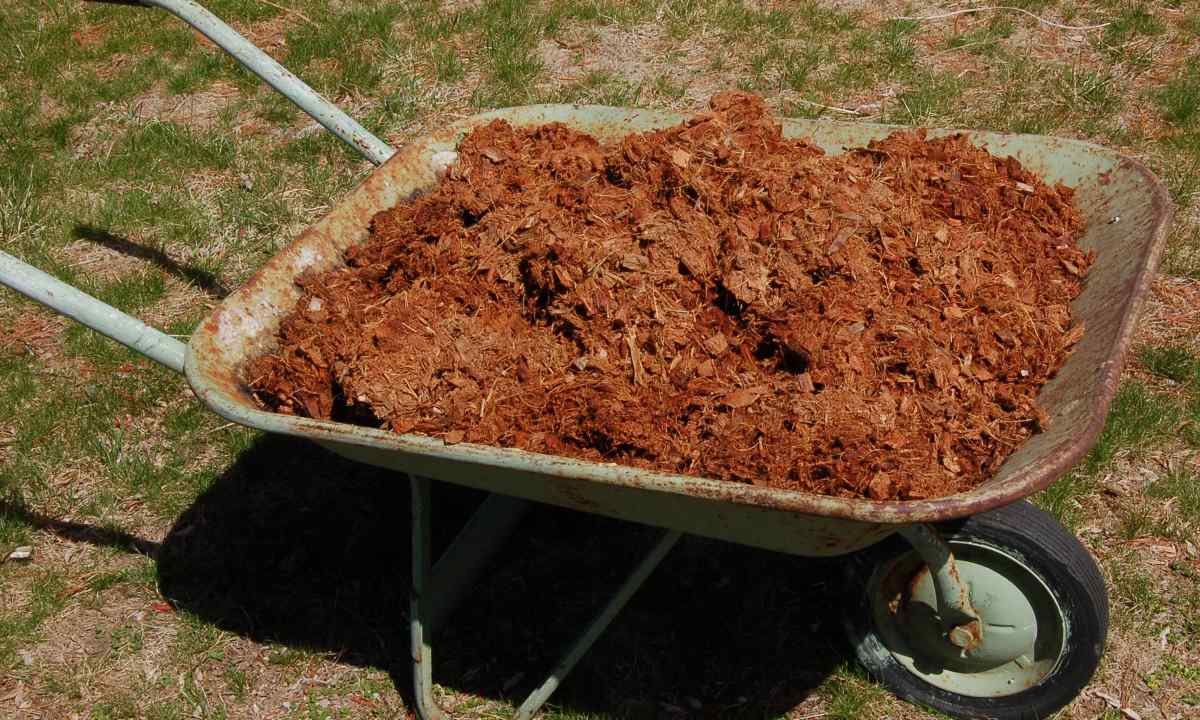After harvesting it is a high time to think of errors of last "tomato" season and to draw conclusions. It is possible to minimize the most labor-consuming operations (weedings and waterings) or in general to forget about them. Long ago the tested method of mulching of beds considerably facilitates leaving and promotes improvement of quality of harvest.
Weeds grow much quicker than cultural vegetable plants. The main care of the gardener during the season are fight against various weeds. Statistics shows: weeds cause the economic damage commensurable with losses from frosts in the spring, heavy rains and drought, diseases and wreckers combined.
Tomato beds, small on the area, as hothouse, and the open ground, does not make big work to cover with mulch. Results will not keep themselves waiting long:
- Due to reduction of evaporation of moisture the number of waterings is reduced.
- The mulching covering does not allow to be formed to crust on the surface of soil – the air permeability of top soil remains.
- The structure of the soil improves thanks to work of soil microorganisms which very comfortably feel under mulch layer.
- Tomatoes many times have fungal diseases less and do not decay. When watering part of soil with microorganisms do not get on green parts of plants.
New generations of chemical herbicides effectively suppress growth of weeds, but the ecological party of this question does not maintain criticism.
Types of mulch
The bed can be covered with anything. The second practical assignment of mulch – use of waste, garbage, mowed grass, fallen leaves, the weeded weeds for the benefit to harvest. On the chemical composition the mulching materials can be divided into 2 groups, organic and inorganic:
Organic mulch – mowed grass, hay, straw, compost, weeds, sawdust, needles, spill, bark, fallen leaves.
Inorganic origin – nonwoven fabrics of type of lutrasil, polyethylene films of various structures, roofing material, paper waste and cardboard.
Advantages and shortcomings of the mulching materials Film
Advantages: inexpensive material, black – against growth of weeds, white – protects the soil from overheating.
Shortcomings: high danger of development of putrefactive bacteria and perishing of roots owing to bad ventilation.
Nonwoven fabrics
Advantages: release black and white, perfectly pass air and water, can be used for the shelter on arches of all bed (frosts, heat).
Shortcomings: high cost.
Roofing material
Advantages: perfectly protects from weeds.
Shortcomings: material impregnation (bituminous pitches) are carcinogen.
Paper and cardboard
Advantages: eco-friendly material for house application.
Shortcomings: quickly razmokat, under the shelter slugs settle, it is impossible to use newspapers and glossy printed materials because of composition of paints.
Hay, straw
Advantages: have excellent thermal insulation, well protect from growth of weeds, promote fertility of the soil.
Shortcomings: in straw mice are got, the mowed grass can become source of new weeds.
Compost
Advantages: excellent heat-insulating material and at the same time – fertilizer.
Shortcomings: at uncontrolled the application happens nitrogen surplus that leads to the strengthened growth of tops of vegetable and decrease in productivity.
Needles, sawdust, bark
Advantages: excellent mulch in combination with small amount of chalk or slaked lime.
Shortcomings: the needles are easily carried by wind therefore it is recommended to cover with nonwoven fabric.
We prepare for spring
Prior to the beginning of new garden season still there is time. Not to spend force and time for infinite weeding of tomato beds, begin to prepare the mulching material.
- It is more favorable to apply nonwoven fabric in complex: black – on soil, white – on arches. The easy option of the greenhouse in which tomatoes can be landed on half-month earlier turns out. The productivity increases also due to longer fructification.
- At the dacha and in the private sector put all vegetable and food waste in compost heap.
- Get rid of ecologically harmful habit to burn the fallen-down foliage – it is useful to you as mulch.
House handymen for certain can complement this not full list of the mulching materials with own inventions. The main thing that ukryvny material not only passed water and air, but also protected from light.

